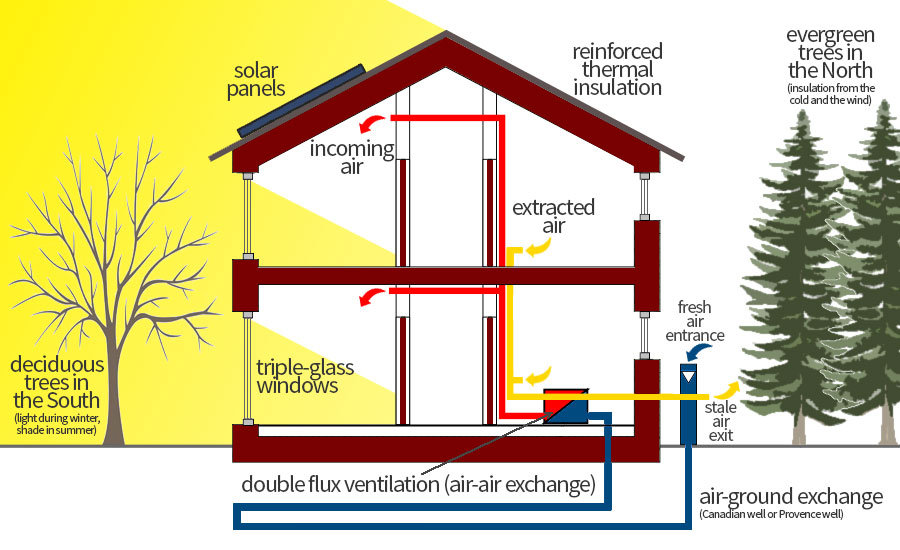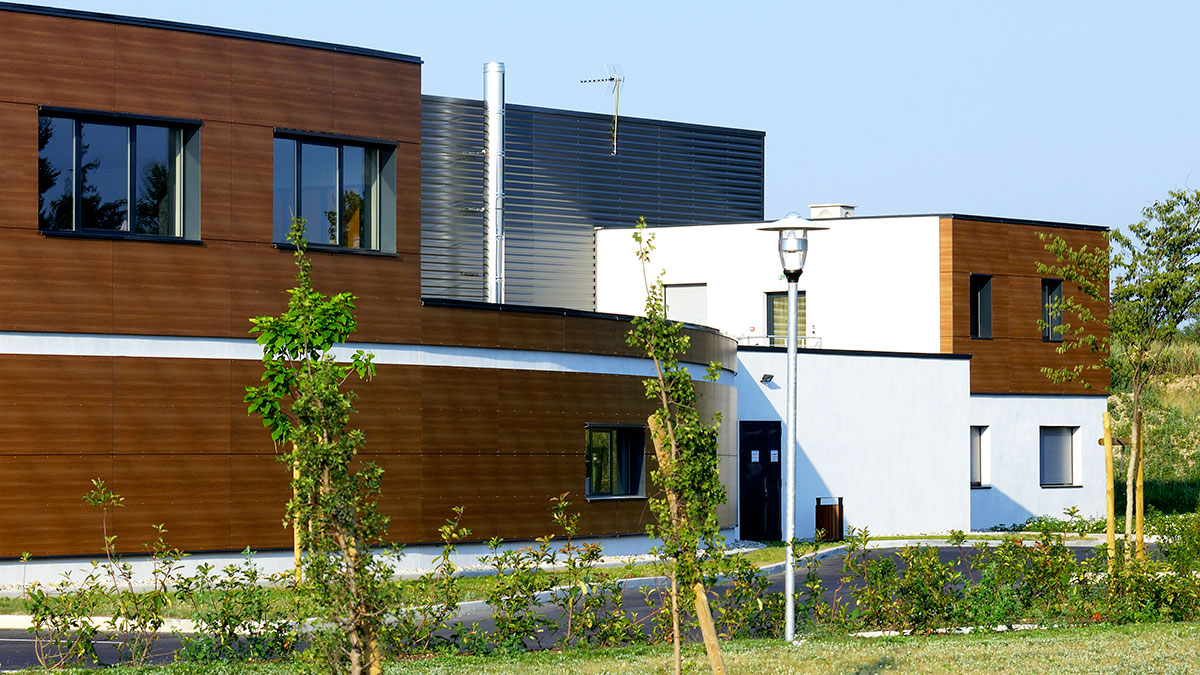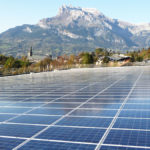The philosophy of sustainable development applied to architecture focuses on the design and construction of environment-friendly buildings. By extension, once the building has been completed, it also focuses on the health and well-being of the users, as well as the quality of life of neighboring communities.
The ecological architecture strives to implement clean technologies, minimize environmental impact, reduce energy consumption, improve building management and health of users.
The choice of natural materials, the integration in the site and the environment, the internal layout of the different rooms according to natural energy inputs, needs and actual consumption of energy, design of green spaces or waste management are all elements by which the architect, according to the wish of the project owner mindful of the environment, can make a building ecological and vector of health and well-being.
Energy consumption of a building
Much of the sustainable architecture is therefore based on the control of the energy consumption of a building:
- reduction of energy losses through the installation of effective thermal insulation, in particular through the judicious use of materials
- minimization of energy needs, in particular through the orientation of the building according to its exposure to the sun and the location of the site
- collection of natural energies, for example with the installation of natural ventilation and cooling systems
- production of alternative energies such as solar or wind power to reduce external energy inputs and, if possible, create energy-positive buildings

Reduction of wastes
Another important part of sustainable architecture is the minimization of pollution and the generation of waste. This can be implemented by the recovery of rainwater, in particular for plant watering and recycling of wastewater, integration of waste sorting systems and composting of organic matter. Using non-polluting materials can also be a means of reducing the emission of volatile organic compounds.
The objectives of sustainable architecture are therefore directed towards the implementation of sustainable construction practices and technologies that aim at long-term ecological efficiency, without neglecting the short-term and the special needs during the construction of a building.
Thus, the responsible architect will make all the necessary arrangements to minimize the environmental nuisance on the site and to implement sustainable construction.




